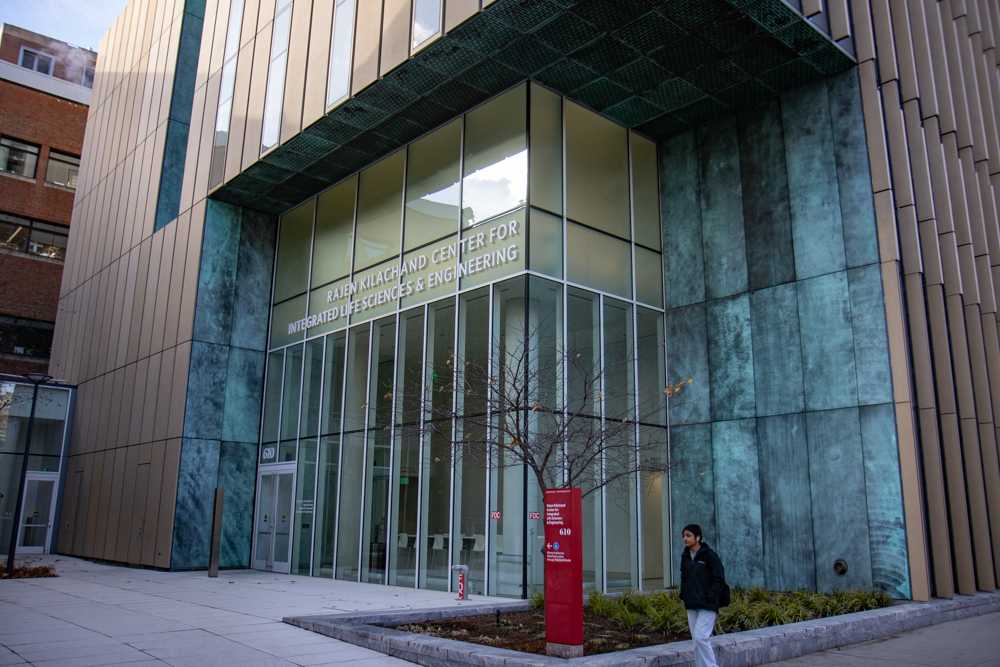Within the last decade, stem cell biology has not only become a preeminent field for research in the scientific community, but also a hot topic in popular culture. Scientists are studying it, politicians are debating over it, and the public is watching every move made in the field.
Such external pressures, however, might lead to the publication of incorrect data, scientists said.
Two weeks ago, Harvard Medical School Assistant Professor Amy Wagers and two members of her research team signed a retraction of their paper on stem cell rejuvenation from the science journal Nature. Nature published the retraction on Oct. 14.
The original paper, published by Nature in January, asserted that a factor in the blood of young mice could reverse the symptoms of aging in comparatively older mice.
According to Wagers, she decided to make the retraction based on information that came to her attention that undermined her confidence in the scientific conclusions, she said in an email.
The retraction does not describe the specific information that Wagers received, but only states that it concerned “the role of osteopontin&-positive niche cells in the rejuvenation of haematopoietic stem cells in aged mice.”
According to an article in The New York Times, the original paper states that Wagers designed and interpreted the experiments and that Shane Mayack, the post-doctoral student who declined to sign the retraction, performed and analyzed them.
“In the laboratory, the relationship between the principal investigator and students is centered around trust,” said professor George Murphy, co-director of Boston University’s Center for Regenerative Medicine. “But, in this case, there seems to be some disparity.”
“Everyone signed off except for the first author who did the majority of the work,” he said.
Amid the hype surrounding the paper retraction, a “Notice of Concern” was recently posted in the journal Blood about another of Wagers’ and Mayack’s papers, published in Blood in August 2008, according to the website Retraction Watch. The Blood website states that the paper is currently under review.
Dr. Wagers has published seven papers in total, five of which have been with Dr. Mayack, according to Retraction Watch.
TIME CRUNCH
Retraction Watch co-authors and medical journalists Ivan Oransky and Adam Marcus stated in a post on the website that “unlike newspapers, which strive for celerity as much as accuracy, science journals have the luxury of time.”
Even so, “mistakes happen,” they wrote on the website.
Today, however, scientific journals increasingly seem to put a premium speed on stem cell research, Murphy said.
“In the stem cell world, you have this double-edged sword where everyone wants to publish first, and journals want to highlight these big papers,” Murphy said. “There is a rush to publication by investigators, and journals are willing to publish at a much faster rate.”
The cutthroat nature of the science community could be at fault for the retraction, he said.
“In the stem cell world, review time is drastically shortened because the stem cell field is so competitive.”
Even so, less time allotted to peer review is not an excuse for error or academic dishonesty, said professor Gustavo Mostoslavsky, co-director of CReM along with Murphy.
“The fact that researchers are left with very little time does not justify fabricated papers,” he said.
However, Gustavo said he does not diminish the intensity of the scientific process.
“Almost the moment you publish a paper, groups are trying to replicate it,” he said. “The nature of science is hard. Biology is hard. But just rushing into publication is not good.”
PUBLISHING PRIORITIES
However, Murphy said pressure from competitive nature does not exclude other possible grounds for the retraction.
“Journals set up an environment where principal investigators want to publish these seminal findings,” he said. “What you can’t tell, and what nobody’s saying, is whether or not the principal investigator sets up an environment that is ethically unsound, or if a rogue post-doctoral fellow produces false data and gives the laboratory a black eye.”
Ultimately, however, the crux of the issue lies on the relationship between members of the laboratory, he said.
“It’s sort of like your own little corporation,” he said. “You have your technicians, your students, and your post-doctoral fellows.”
Nonetheless, the retraction acts as a testament to the scientific process, Murphy said.
“The fact that the paper has been retracted says that the system of checks and balances between peer reviewers and principal investigators works,” he said.
ONLY TIME WILL TELL
Fortunately, Dr. Wagers’ paper has not had a substantial effect on the research being conducted at BU’s CReM, he said.
“It is a relatively new paper,” he said. “If anything, it has affected the field as a whole because it plays into what everyone thinks about the regenerative capacity for stem cells and aging.”
According to the Web of Science online citation index, the paper has been cited 13 times since January.
Nonetheless, the retraction acts as a testament to the scientific process, Murphy said.
“The fact that the paper has been retracted says that the system of checks and balances between peer reviewers and principal investigators works,” he said.

























































































































iron man games • Feb 5, 2013 at 8:11 pm
Attractive component to content. I simply stumbled upon your website and in accession capital to claim that I acquire actually enjoyed account your blog posts. Any way I’ll be subscribing for your feeds and even I success you get right of entry to consistently fast.